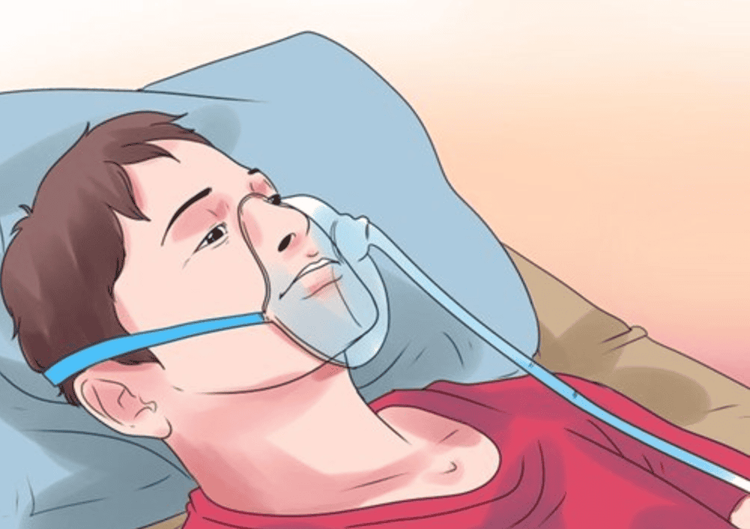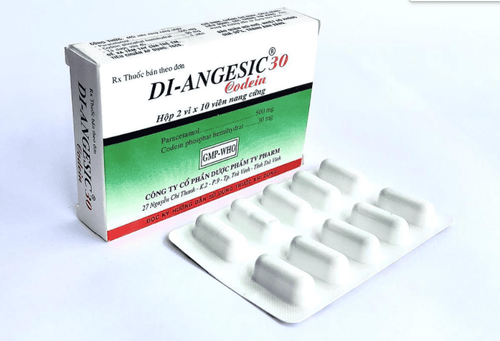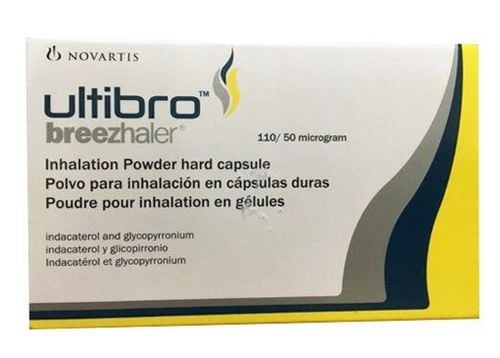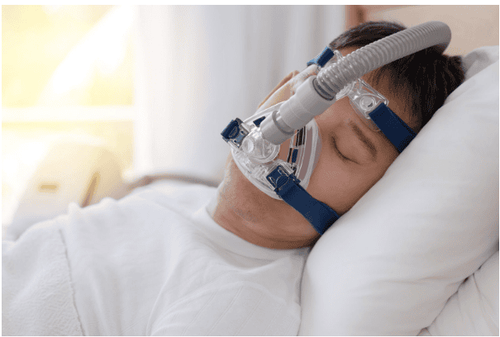This is an automatically translated article.
The article is professionally consulted by Master, Doctor Tong Van Hoan - Emergency Medicine Doctor - Emergency Department - Vinmec Danang International Hospital. Doctor with 10 years of experience in the field of Emergency Resuscitation.Artificial oxygen therapy for patients with chronic obstructive pulmonary disease (COPD) is effective in treating acute exacerbations as well as long-term home treatment. So what role and specific benefits does this therapy have?
1. Treatment of exacerbations of chronic obstructive pulmonary disease with oxygen therapy
Using oxygen therapy to treat exacerbations in patients with chronic obstructive pulmonary disease must ensure the following principles:Purpose: The purpose of long-term oxygen therapy for patients with chronic obstructive pulmonary disease is to: helps provide oxygen in higher concentrations in the air for the treatment of chronic hypoxemia. Goal: avoid respiratory acidosis by achieving PaO2 ≥ 50 mmHg, and not decreasing pH < 7.35. Then, adjust so that oxygen saturation is > 90% or PaO2 > 60 mmHg and there is no increase in blood CO2 or a decrease in pH. Chest X-ray before administering oxygen therapy. Before and after using oxygen therapy, an arterial blood gas should be performed. To stabilize the FiO2 level, it is necessary to initiate oxygen therapy with a FiO2 concentration in the range of 24%-28% using a nasal cannula. After 30 minutes of using artificial oxygen therapy, it is necessary to perform arterial blood gas again. In the event that initial treatment fails with FiO2 levels between 24% and 28%, the patient should be considered for pneumothorax, pulmonary embolism, or pneumonia. During oxygen therapy, it is important to monitor whether CO2 is trapped to avoid respiratory acidosis. Pay attention to symptoms such as warm limbs, lethargy, drowsiness, pulse, ... these are symptoms when CO2 is stasis.

Trắc nghiệm: Làm thế nào để có một lá phổi khỏe mạnh?
Để nhận biết phổi của bạn có thật sự khỏe mạnh hay không và làm cách nào để có một lá phổi khỏe mạnh, bạn có thể thực hiện bài trắc nghiệm sau đây.2. Long-term and home-based oxygen therapy for COPD patients
2.1 When does a COPD patient need long-term home oxygen therapy?
Artificial oxygen therapy is applied to patients with stage 4 COPD and chronic respiratory failure. In addition, the patient also has the measured index of PaO2 < 55 mmHg, or PaO2 in the range of 55 - 60 mmHg but accompanied by pulmonary hypertension, heart failure and polycythemia vera (Hct > 55).The aim of this therapy is to treat the patient's chronic hypoxia by providing oxygen at a higher concentration in the air.
The goal of oxygen therapy for patients with COPD is to improve hypoxia in the blood and prevent hypoxia by providing oxygen with an appropriate device and optimal flow, but at the same time must ensure patient safety and avoid complications of oxygen poisoning.
2.2 Benefits of long-term artificial oxygen therapy at home
For patients with chronic obstructive pulmonary disease, using artificial therapy at home brings the following benefits:Stabilizes the pressure of the pulmonary artery, limiting the right heart failure, congestive heart failure. Improve mobility, especially strenuous exercise of the patient. Reduces shortness of breath and hospital admissions for acute exacerbations. Improved quality of life as well as neuropsychiatric problems due to improved sleep, thereby increasing life expectancy.
2.3 Principles and dosage regulations in the use of artificial oxygen therapy at home
Patients with chronic obstructive pulmonary disease when receiving oxygen therapy at home need to meet the following criteria:The disease is in a stable state and being treated with bronchodilators, inhaled corticosteroids. Patient has at least 2 blood gas results done on air and at least 20 minutes apart. Patients with PaO2 < 55 mmHg or PaO2 in the range 55-60 but with pulmonary hypertension or Hct > 55%. The dose of artificial oxygen therapy used at home is as follows:
The patient receives continuous oxygen using a single or double nasal cannula. The lowest oxygen flow is such that PaO2 reaches 60 - 65 mmHg or SpO2 reaches 88 - 94%. During exercise and sleep, the patient was increased by 1 liter over the baseline dose.

2.4 Notes when using artificial oxygen therapy at home
During treatment with artificial oxygen therapy at home, patients and relatives should note:Avoid using too high a dose when the patient has difficulty breathing or the disease suddenly worsens, leading to respiratory stimulation. of the patient is lost. Failure to comply with the prescribed dose in terms of breathing time. There should be a specialist doctor's follow-up weekly, monthly or when there is a problem to handle promptly. There should be a home treatment record book for the patient. While using artificial oxygen therapy, it is also necessary to ensure other optimal treatment such as not using tobacco, taking prescribed medications and ensuring nutrition. Regularly clean breathing apparatus, must be cleaned properly. Pay attention to change the clean water for the humidifier daily or when the water runs out. Monitor the amount of oxygen breathed, paying attention when the oxygen tank is almost empty. Lock the valve when not in use. During the use of oxygen therapy for COPD patients at home, attention should be paid to:
Arterial blood gases before and after the appointment of oxygen. Monitor SpO2 to adjust oxygen dose accordingly. If CO2 retention occurs, blood gases and acidosis should be monitored. In case of acidosis, the patient should be considered for assisted ventilation. Oxygen therapy for people with chronic obstructive pulmonary disease (COPD) is an effective long-term and at-home treatment to stabilize pulmonary artery pressure and limit right-sided heart failure.
For oxygen therapy to be highly effective in the treatment of chronic obstructive pulmonary disease (COPD), patients need to use it according to the technical indications as well as the dosage, to ensure their safety during the procedure. performed at the hospital as well as monitoring at home.
Currently, at Vinmec International General Hospital, oxygen therapy is used in emergency and urgent cases to avoid complications of respiratory failure as well as other respiratory diseases affecting health. of the patient. In addition, this is also the address for examination, treatment and prevention of many diseases with optimal results thanks to modern technical facilities, a team of dedicated, professional and dedicated doctors. profession.
Please dial HOTLINE for more information or register for an appointment HERE. Download MyVinmec app to make appointments faster and to manage your bookings easily.














